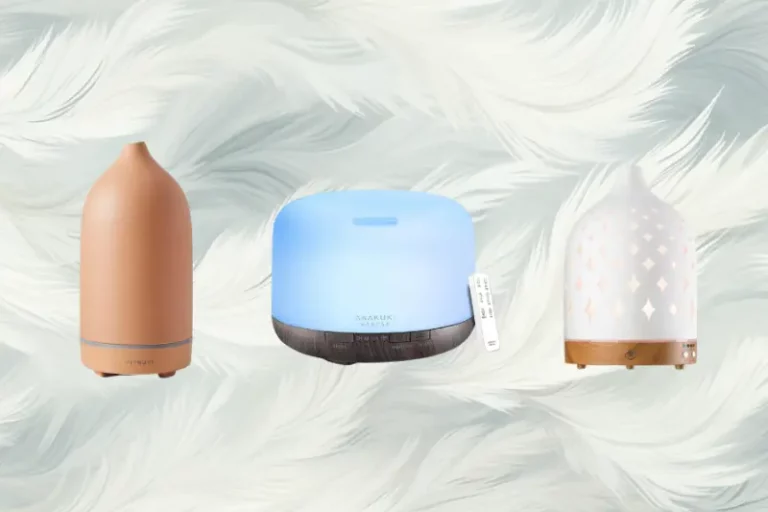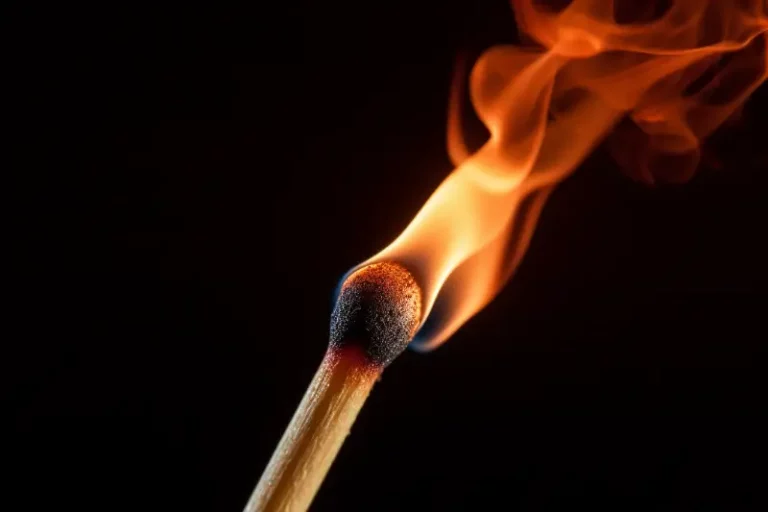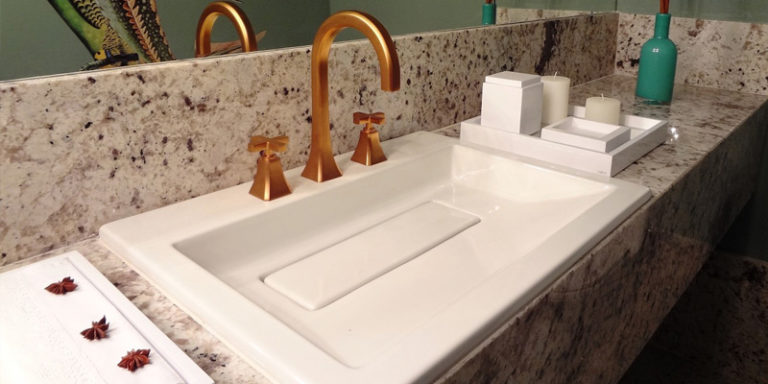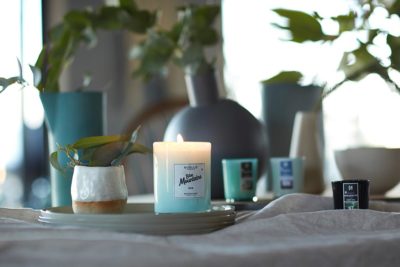Understanding the Different Types of Essential Oil Diffusers
Essential oil diffusers are a popular way to enjoy aromatherapy and potentially benefit your health. We all use them, but can you distinguish the differences between them?
Today, I’m going to cover the four primary types of diffusers – nebulizing, ultrasonic, evaporative, and heat diffusers – and then ranks them based on factors like diffusion power, health impact, diffusion time, price, and ease of use. I’ll also go over other diffuser types like fan, stone, reed, cold air, and HVAC diffusers, which typically fall under the main four categories.
By the end, you’ll understand the different diffuser types and how to choose the perfect one based on your priorities.
Whether you’re new to aromatherapy or an experienced user, this comprehensive guide will equip you with the knowledge to make an informed decision and enhance your home with the benefits of essential oil diffusion.
Exploring The 4 Different Types of Essential Oil Diffusers and Their Subtypes
1. Nebulizing Essential Oil Diffusers
Nebulizing diffusers are known for being a powerful and direct method of diffusing essential oils.
They work by breaking down the essential oils into tiny particles creating a fine mist that is released into the air. There is no need for water or heat in this diffusion method. This diffusion method is sometimes referred to as cold air diffusion.
As the mist disperses, it maintains the full therapeutic benefits of the essential oils, providing a potent and pure aromatherapy experience.
Nebulizing technology is used in a variety of the usually more expensive scent diffusers like HVAC diffusers and standalone cold air diffusers.
Advantages of Nebulizing Diffusers
- Pure and undiluted diffusion of oils
- Small particles that can easily be inhaled during aromatherapy
- Strong, immediate aroma
- Can diffuse large spaces effectively
- No heat or water needed which maintains the integrity of the essential oil
- Customizable settings on many models of these diffusers
Disadvantages of Nebulizing Diffusers
- High essential oil consumption
- Known to be somewhat noisy
- More expensive than other types of diffusers
Nebulizing diffusers will give you a pure aromatherapy experience, keeping the properties of the essential oils in their original form due to not needing heat or water to operate. They offer immediate fragrance and can efficiently diffuse a large space in your home making for an excellent choice if you want essential oils kept in their pure and potent form.
To learn more about nebulizing diffusers including how to choose them and use them properly read our in depth guide to nebulizing diffusers here.
Popular Basic Nebulizing Diffuser We Recommend
The Radiance Nebulizing Diffuser by Organic Aromas
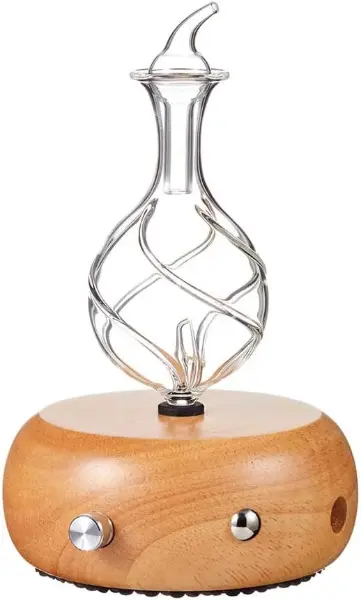
For nebulizing diffusers, the Radiance by Organic Aromas is impressive. Its glass and hardwood design gets the job done without being overly flashy and the choice to use glass over plastic is smart choice since oils can wear down the plastic diffusers over time. One of the best nebulizing diffusers that you can find for a reasonable price online.
HVAC Scent Diffusers (Often Use Nebulizing Technology)
HVAC diffusers, also known as HVAC fragrance systems or HVAC scent diffusers, are unlike the other types of nebulizing diffusers because they need to be tied into a buildings existing heating, ventilation, and air conditioning (HVAC) systems.
Because the essential oils or fragrance oils are dispersed directly into a buildings ventilation, they can be distributed evenly and fully throughout large spaces via air ducts or vents.
These are often the type of scent diffusers that you will find used in fancy hotels and other commercial places that want to give that luxury scent experience. Disney World, I’m looking at you!
Advantages of HVAC Diffusers
- Unmatched diffusion coverage that is consistent
- Low maintenance once they are installed and automatically dispersed
- Discreet because they are tucked away with the existing HVAC system
- Great for commercial use
Disadvantages of HVAC Diffusers
- Less scent selections are available compared to other types of diffusers
- More complex installation
- Intensity of fragrance diffusion is highly dependent on the HVAC system’s airflow
- Most expensive of the diffuser types
Overall, HVAC scent diffusers are an effective choice for adding ambiance through fragrance in commercial applications but are less common for home use due to the complexity of installation and the higher price tag that comes with them.
Popular HVAC Diffuser We Recommend
The AromaPlan 2023 DAP 1001 Nebulizing HVAC Diffuser by AromaPlan
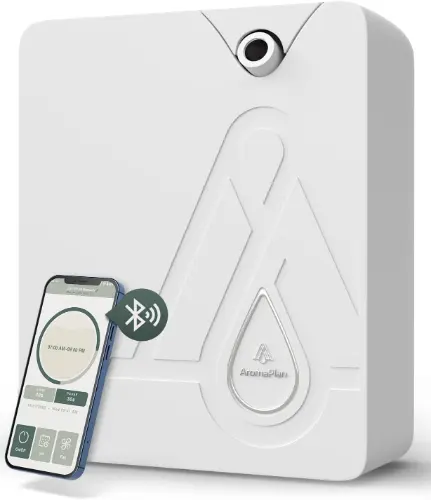
This diffuser is the perfect stepping stone in upgrading to HVAC essential oil diffusers. It’s a nebulizing diffuser that is large enough to cover 1500 square feet and it also has the option to be connected to your HVAC system for performance that you can’t really get from other types of diffusers.
If you are pondering the idea of an HVAC diffuser but are hesitant to take the leap, this diffuser is an excellent choice.
2. Ultrasonic Essential Oil Diffusers
Ultrasonic diffusers are some of the most common diffusers that you will find and are known for their versatility and for adding a serene ambiance.
Most ultrasonic diffusers work by emitting ultrasonic vibrations to disperse a fine mist of water and essential oils into the air. The water acts to help carry the essential oil and spread the aromatic benefits through a space.
Advantages of Ultrasonic Diffusers
- Serve a dual purpose as a humidifier as well as diffuser, great for dry climates
- Great for sensitive people due to gentle and cool diffusion mist
- Very little noise, great for sleeping
- Does not use heat so the therapeutic properties of the essential oils are maintained
- Essential oils last longer because these diffusers consume less
- LED light options available on many devices for added ambiance
- Automatic shut-off is usually built in triggered when the water level is low
Disadvantages of Ultrasonic Diffusers
- Heavily diluted essential oil potency due to water being mixed in the diffusion
- Only effective and covering small rooms and is dependent on the airflow in the room
- You must refill water often
- Regular maintenance is essential and they need to be cleaned around every 5 uses
- If you live in an already humid climate, these can add unwanted humidity, but it is usually a negligible amount
Ultrasonic essential oil diffusers are great because they can offer an added ambiance to a space while being gentle on those that are sensitive to more harsh fragrance methods. Because this type of diffuser also adds humidity to the air on diffusion, they can be a great option for dry climates but an unwanted side effect in already humid places.
To learn more about ultrasonic diffusers including how to properly maintain them and our recommendations for the best diffusers read our complete guide to ultrasonic diffusers here.
Popular Ultrasonic Diffuser We Recommend
Terracotta Stone Ultrasonic Diffuser by Vitruvi from Anthropologie
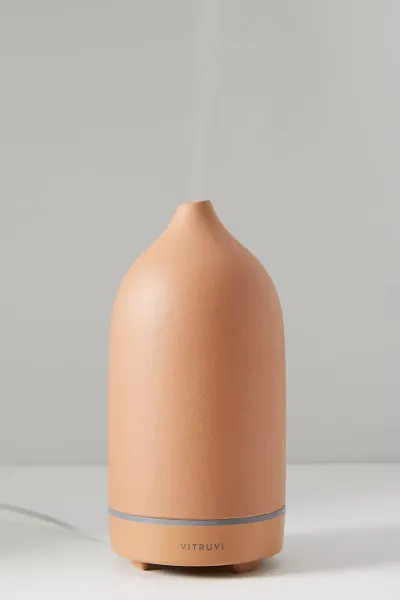
If you’re looking for a good ultrasonic diffuser that has some impressive visual appeal to it as well, these porcelain diffusers from Vitruvi are one of my favorite options. They work great as far as ultrasonic diffusers go and that terracotta stone look that this one has looks excellent in person.
3. Evaporative Essential Oil Diffusers
Evaporative diffusers work by naturally evaporating the essential oils in the air and spreading the aroma throughout a space.
Most of these diffusers are simple and portable (excluding HVAC diffusers) and do not require heat or water to diffuse the oils which maintains their original properties.
Evaporative diffusers also include some subtypes of diffusers that you may not find included in other guides that cover this topic but are usually very commonly found.
Those subtypes are:
Fan Diffusers
These diffusers can either be battery powered or electric and work by using a fan to blow air over an essential oil soaked filter or pad. This allows the diffuser to propel the oil particles throughout a space with varying levels of intensity.
You may be familiar with Wallflowers from Bath and Body Works; they are an example of fan diffusers.
Advantages of Fan Diffusers
- Often are portable and can easily be moved or used when traveling
- No water or heat are needed so most of the therapeutic properties of the oils are maintained
- Adjustable intensity on most fan diffusers for varying levels of scent
- Relatively cheap
- Can target small areas
- Easy to use
Disadvantages of Fan Diffusers
- Limited coverage due to fan capabilities
- Shorter diffusion time as the essential oil also evaporates on the filter more quickly than other diffusers
- Often need to buy refills for all-in-one fan diffusers
- Filter tends to separate the essential oils leading to uneven diffusion
Natural Diffusers AKA Passive Diffusers (Stone, Wood, Terracotta, Ceramic, Pad etc.)
These diffusers are made of porous materials, like clay, lava rocks, or wood, which absorb and slowly release essential oils naturally into the air. Some are simply pads that have essential oils soaked into them like many car air fresheners.
These types of diffusers are available in a wide array of eye-catching designs that are often both functional and aesthetically pleasing additions to any space.
Wearable Essential Oil Diffusers Are A Type Of Natural Diffuser As Well
You may or may not have heard of these diffusers as we are getting into the less common types now, but you can also find bracelets and necklaces that actually diffuse essential oils as well!
These commonly use lava rock pendants to diffuse essential oils but they can also have pendants which hold felt pads you can soak in essential oils and refill as needed.
Advantages of Natural Diffusers
- No electricity required
- Can make great decor pieces and come in a variety of designs
- Long-lasting scent due to the porous materials slow release of scent
Disadvantages of Natural Diffusers
- Limited to no diffusion control so fragrance intensity is hard to adjust
- Very small diffusion area and best suited on a desk or a bedside table at night
Reed Diffusers
Reed diffusers use natural reeds (often made of rattan or bamboo) or sticks to draw up essential oils from a container, which then allows the essential oils to evaporate and naturally scent the nearby air.
You often find reed diffusers made by popular candle brands as an alternative way to experience their scents without burning their candles. Because of this, reed diffusers range in price depending on if they are made by a luxury candle brand or not.
Advantages of Reed Diffusers
- No electricity or heat needed
- Safe and easy to use in any room
- Often long-lasting fragrance depending on the quality
Disadvantages of Reed Diffusers
- More mild aroma compared to other diffuser types
- Quality can vary quite a bit between brands
- Limited diffusion control although more than stone diffusers because you can add more reeds for more scent
Evaporative diffusers offer simplicity and convenience, making them popular for personal use and travel. Each subtype presents unique advantages, catering to different preferences and requirements for aromatherapy enthusiasts.
To learn more read our in depth guide to reed diffusers that we did here. We go over how to use them properly, DIY to make your own, and share our recommendations for the best reed diffusers that we’ve tried.
Popular Reed Diffuser We Recommend
Dr. Vranjes Reed Diffusers
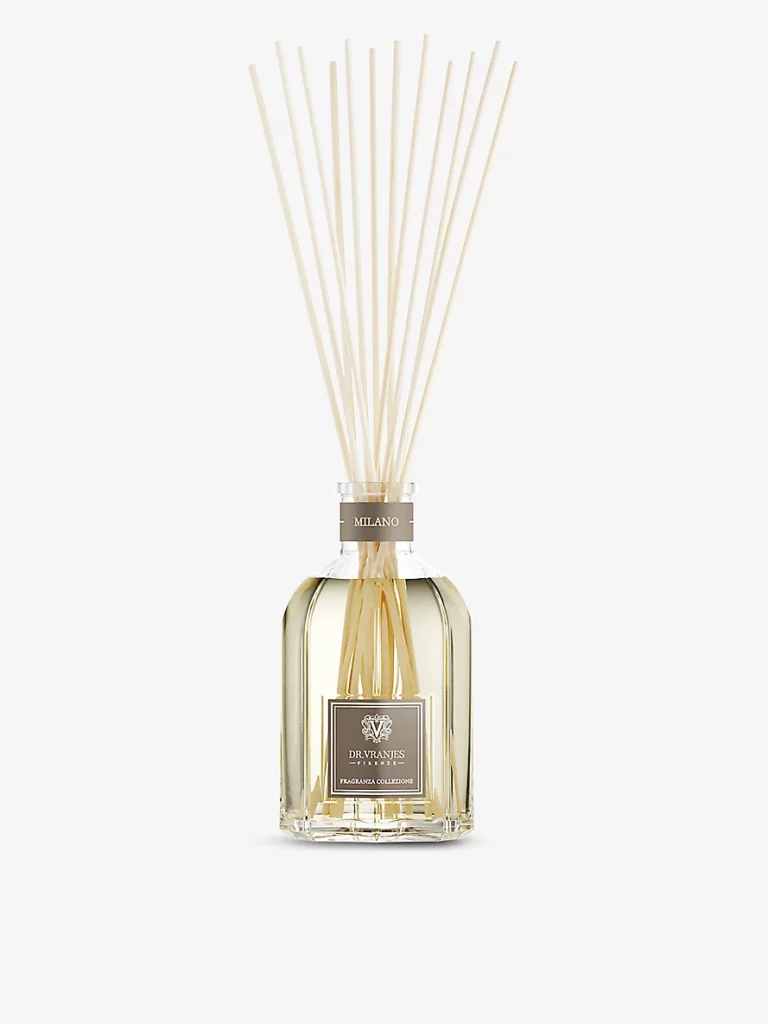
The reed diffusers from the luxury fragrance brand Dr. Vranjes are so worth the extra money. If you’ve tried Dr. Vranjes and didn’t like some of their other products, I urge you to give their reed diffusers a try, they are so much better than many of the other things I’ve tried from them.
4. Heat Essential Oil Diffusers
Heat diffusers AKA aroma lamps or candle diffusers are a more traditional way to disperse essential oils. These are similar to wax warmers but essential oils are heated rather than wax melts or scented candles.
Typically a heat diffuser will have a holding plate where the essential oil is placed and then a heat source beneath the plate. Various sources of heat are often used including candles, light bulbs, or electric heaters.
The essential oils are then diffused through the air by gently being heated causing the aromatic scents to lift into the air.
Advantages of Heat Diffusers
- Simple to use
- Provide ambient lighting usually
- Silent dispersion of essential oils
- Cheapest of all diffusion types
- Effective at adding fragrance in small spaces
Disadvantages of Heat Diffusers
- Heat can alter the properties of the essential oils at a molecular level, completely altering or sometimes eliminating their therapeutic effect
- Limited coverage in medium to large spaces
- Risk of overheating is present, especially when candles are used as a heat source
- Light bulbs, and candles will need to be replaced
- No automatic shutoff or clear indication of when oil needs to be changed
- Light may be annoying depending on use
Heat diffusers are a popular choice for scenting a space with essential oils. They provide and often subtle aroma that permeates through the air but also adds a traditional feeling of ambience and illumination.
Caution should be taken when using heat diffusers with essential oils however, as the heat can have unintended effects on the properties of the oils often changing them.
Comparing Essential Oil Diffusers: Review and Ranking Each Based on Key Aspects
In this section, we’ll review and rank the different types of essential oil diffusers based on their ability to diffuse oils, impact on therapeutic use, diffusion time, price, and ease of use.
While this section isn’t an exact science, based on the pros and cons of each diffuser type and making some opinionated decisions, we can come to a relatively solid conclusion on these key aspects to help you decide which diffuser is best suited to your own personal circumstances.
1. Ability to Diffuse Essential Oils
Ranking: HVAC diffusers > Nebulizing diffusers > Cold air diffusers > Ultrasonic diffusers > Heat diffusers > Evaporative diffusers > Fan diffusers > Reed diffusers > Natural diffusers
2. Effect on Therapeutic Properties (Least change to properties)
Ranking: Nebulizing diffusers > Cold air diffusers > Evaporative diffusers > Reed diffusers > Natural diffusers > Fan diffusers > HVAC Diffusers > Ultrasonic diffusers > Heat diffusers
3. Length of Diffusion Time (Longer is better)
Ranking: Nebulizing diffusers > Cold air diffusers > HVAC diffusers > Ultrasonic diffusers > Evaporative diffusers > Natural diffusers > Reed diffusers > Fan diffusers > Heat diffusers
4. Price (Initial price)
Ranking: Reed diffusers > Evaporative diffusers > Natural diffusers > Heat diffusers > Fan diffusers > Ultrasonic diffusers > Nebulizing diffusers > Cold air diffusers > HVAC diffusers
5. Ease of Use (Including maintenance and setup)
Ranking: Reed diffusers > Fan diffusers > Natural diffusers > Evaporative diffusers > Heat diffusers > Nebulizing diffusers > Cold air diffusers > HVAC diffusers > Ultrasonic diffusers
Keep in mind that this ranking is based on a combination of factors, and the best diffuser may not always follow these rankings.
In Summary
That was probably a lot of info to digest at once.
In this guide we went through all of the different types of essential oil diffusers that you’ll come across and ranked them based on factors that we feel most people will find important before finally choosing one for themselves.
As you can see above, each diffuser type comes with their own share of positive and negative aspects. Hopefully that makes choosing one that fits your to person preferences a little easier.
If you did find this guide at all helpful and enjoyable, I’d love if you shared this post on the socials!
Also, if you disagree with anything in this post or think it could use some additions, please let me know in the comments below 🙂



